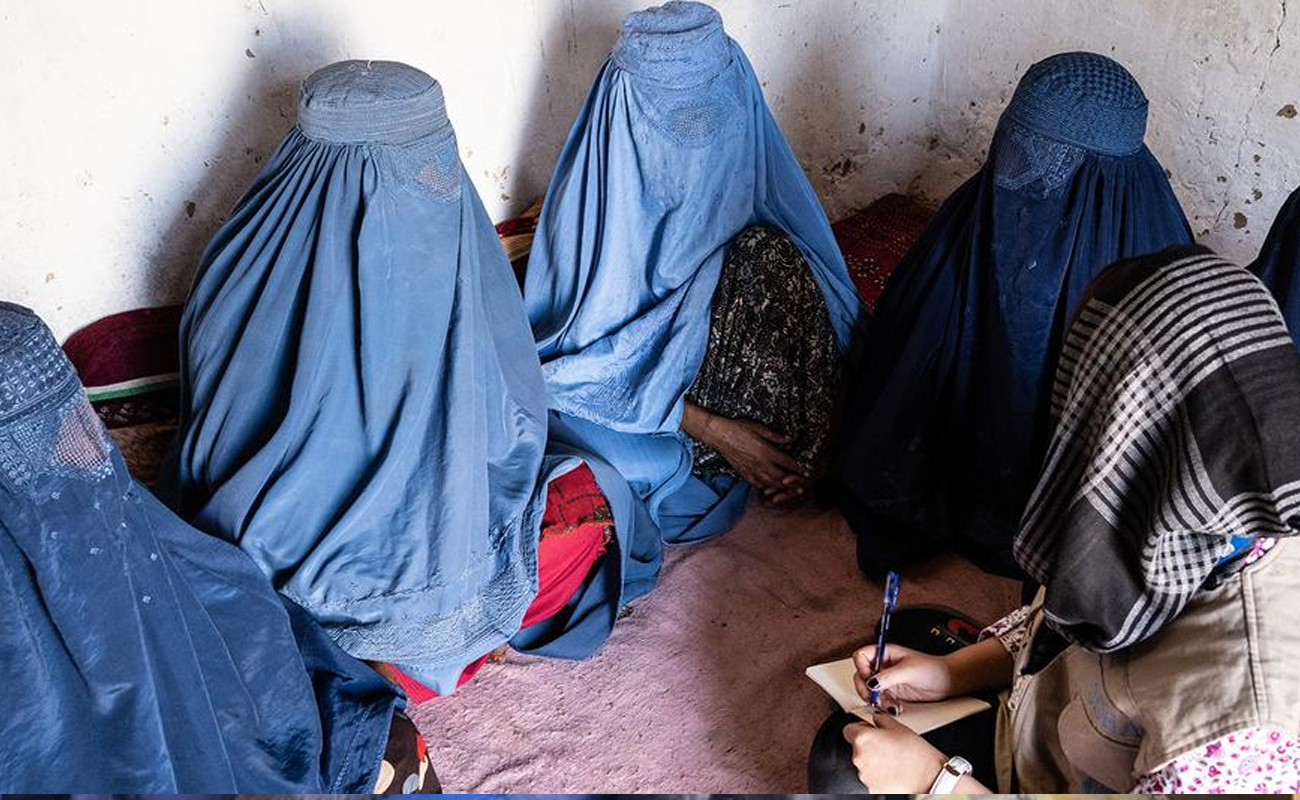A Profile on The Status of Women During the Decade and A Half of Reconstruction:
Photo credit: © UNOCHA/Charlotte Cans | An OCHA woman staff member meets displaced women in eastern Afghanistan
By Abdul Saboor Sitez
During the last 16 years, considerable efforts have been made to address women’s problems in Afghanistan. Afghan women have taken important steps in all sectors, from education to politics, civil society, government and democratic institutions. As we know, with the fall of the Taliban in 2001, a new chapter of changes for Afghan women emerged.
Opportunities and support was provided for women in in society, economy, politics and culture before 2021. It was a time when women could get out from their historical marginalization and social isolation. With the approval of the constitution in 2004, after the collapse of the first Taliban regime, the legal equality of women and men in various fields was ensured and guaranteed. This was considered to be a show of strong support for the women of Afghanistan. Government institutions, international organizations, human rights groups, and the world community, paid special attention to the issue of women and their rights from different perspectives.
After the fall of the first Taliban regime in 2001, the Islamic Republic of Afghanistan signed and approved several commitments to the rights of Afghan women and gender equality. This was in the form of laws, treaties, and agreements. The result and outcome of all these activities and efforts gradually became evident during that time. In this regard, the role of active women and civil society activists in order to obtain their rights despite suffering, risks and threats is praiseworthy.
Women had a relatively effective presence in the field of civil organizations and institutions prior to 2021. Although Afghanistan has a relatively comprehensive legal framework and various mechanisms for achieving gender equality, the adoption of these mechanism has been faced with challenges.
There was still misogyny in society, both in visible and hidden forms, during this time. The anti-feminist way of thinking prevented women from benefiting from their civil and social rights in many cases. Still, Afghan women, previously did not and still currently do not, have financial security. Considering that more than 70 percent of the people of Afghanistan live in villages, few women in the villages have benefited from literacy and education, despite the previous government’s support of female education.
The history of Afghanistan shows that some conservative parts of society do not easily consider women’s issues or support women’s rights and reforms. In this regard, these people are one of the serious obstacles for women in the country. At the same time, one cannot turn a blind eye to the developments regarding women’s equality in the field of lawmaking during the former government.
However, there was an inefficiency in the application of these laws and their implementation. This is because some lawmakers and legislators did not sincerely support the issue of women’s rights. Meanwhile, the issue of women in Afghanistan has gradually turned into a marginal issue for the Taliban and the world now, and the international community’s approach and concern regarding this is not seen as urgent anymore.
Improving the status of women and facilitating the process of their presence in the public space requires an understanding of the obstacles that prevent their presence in the society, in both an obvious and hidden way. After the approval of the 2004 constitution and laws relating to women’s equality, official legal obstacles were removed for women. This allowed them to participate in political, cultural, social and economic affairs. But experience has shown that removing official legal obstacles for women to participate in social programs in not enough, and there are countless other obstacles that still highlight women’s subjugation and perceptions of them as subordinate among some people.
This in turn hinders the participation of women in various sectors. Among the informal barriers are complex cultural and traditional structures that effect women’s lives in visible and hidden ways, and these have negative effects on their ability to change their situations for the better. The rules of the traditionalists in society have had a great impact on the lives of Afghan women. They have caused various limitations and harms to women. Thus, without a large-scale shift in the attitudes towards women, especially at present given the Taliban’s restrictions and denials of rights for women, it will be harder for women to attain their full potential, be it in education, work or politics.
Abdul Saboor Sitez, is a writer and expert on International Relations. His articles have appeared in publications, such as: Hasht - e - Subh, Etilaat Roz, Subh - e - Kabul, Afghan Women's Voices, Zan - e Rooz.
Academicians and Officials interested to publish their academic pieces on this page, please approach us through: opinions@aissonline.org.
The article does not reflect the official opinion of the AISS.

